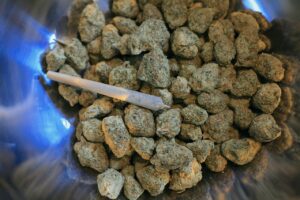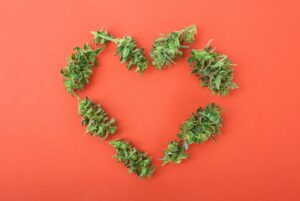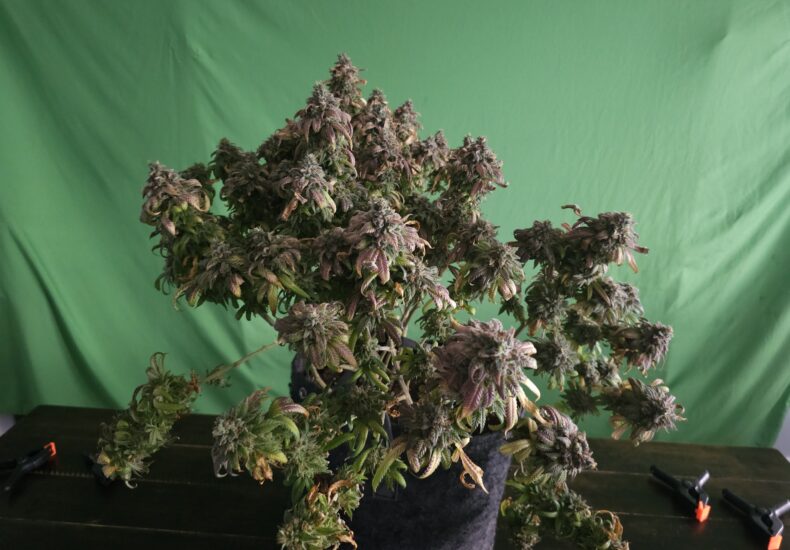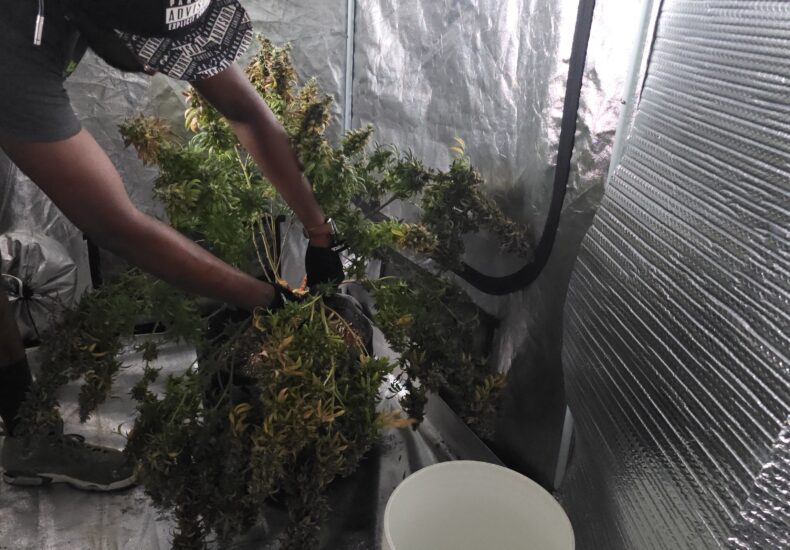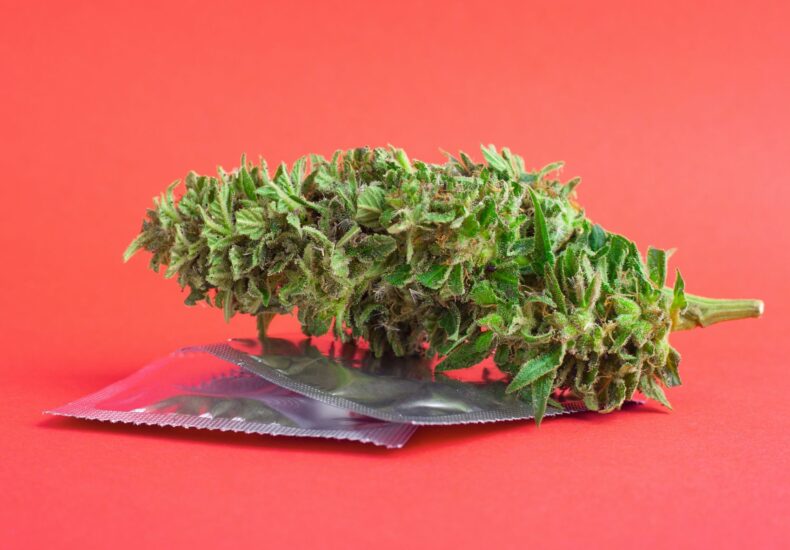
As the popularity of edibles continues to rise, more people are exploring the delicious possibilities that cannabis can bring to the table. Whether you’re a seasoned chef or a curious foodie, making your own cannabis edibles can be a fun and rewarding experience. In this guide, we’ll walk you through everything you need to know, from selecting the right strains and ingredients to mastering the techniques that will elevate your homemade treats. So, grab your apron, and let’s dive into the flavorful and euphoric world of cannabis edibles!
Table of Contents
A High You Can Taste
The consumption of cannabis-infused foods or edibles has grown steadily in the past few years, either for medicinal or recreational purposes. Its global adoption is due to the ever-changing opinions about cannabis.
Therefore, it has become a lucrative business for marketers as more consumers are dipping their toes in the fantastic world of edibles.
The Speciality Food Association (2017) predictions stated that marijuana would be on the top ten food trend list.
According to the statistics cited in Flow Hub (2021), currently, twelve states have legalized cannabis for recreational purposes only for adults above 21 years of age, and thirty-four states have legalized it for medical usage.

The Current Cannabis Market
The cannabis market has been experiencing significant growth, propelled by changing societal attitudes and expanding legalization. According to recent data, the global market for cannabis edibles is projected to reach $37.11 billion by 2032, growing at a compound annual growth rate (CAGR) of 16.5% from 2023 to 2032. This growth is largely driven by the increasing consumer demand for discreet, smoke-free methods of cannabis consumption, along with the broadening variety of available edibles, from chocolates and candies to beverages and baked goods (Flowhub) (Global Market Insights Inc.).
In 2022 alone, the cannabis edibles market size was valued at $8.01 billion, with THC-dominant products accounting for a significant share due to their popularity among both recreational users and those seeking relief from medical conditions like chronic pain and anxiety (Global Market Insights Inc.). The legal landscape is also a major factor, as regions such as North America, where recreational cannabis is legalized in Canada and numerous U.S. states, see substantial market expansion.
Moreover, the market dynamics have been influenced by technological advancements and regulatory challenges. The integration of technology in production and distribution, such as automated systems and data analytics, is enhancing efficiency and product quality. However, stringent regulations, including THC concentration limits and packaging requirements, pose challenges for market players (Maribis).
Despite these hurdles, the cannabis edibles market continues to thrive, supported by increasing legalization efforts and the growing recognition of cannabis’ medicinal and therapeutic benefits. As consumer preferences evolve, with a notable shift towards edibles, the market is expected to continue its robust growth trajectory (Global Market Insights Inc.).
People Have Their Concerns
Cannabis edibles, much like other marijuana products, are not regulated by the FDA, which raises various concerns among consumers. The unpredictable effects of edibles on different individuals contribute to the complexity and caution required in their consumption.
The way edibles interact with the human body varies widely. Some people may experience a euphoric high, while others may find the effects to be more intense and long-lasting. This variability is partly due to how edibles are metabolized in the body. When consumed, edibles are processed by the liver, converting THC into 11-hydroxy-THC, a compound known for its potency and extended duration of action. This process can make the effects of edibles significantly different from those experienced through smoking or vaping cannabis (Vantage Market Research).
Despite these variations, reputable brands design their edibles with precise dosing and high-quality ingredients, aiming to offer a safe and consistent experience for consumers. However, the individual response to cannabis compounds means that the timing, duration, and potency of effects can vary greatly from person to person (Vantage Market Research).
So before discussing its absorption method, let’s quickly tap into what edibles are.
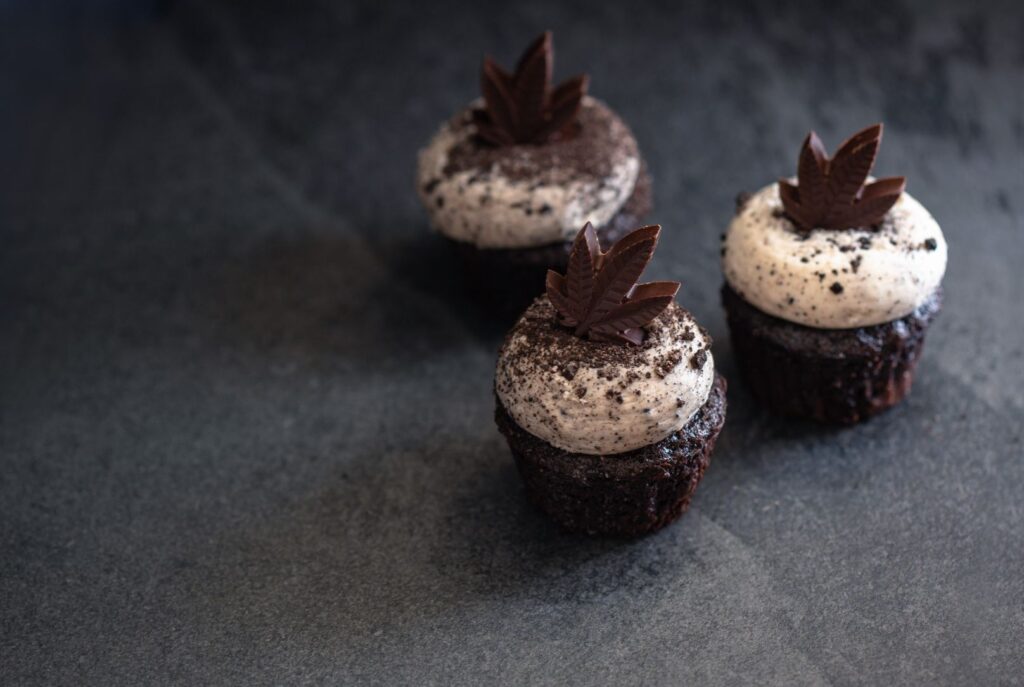
Edibles: A 420 Treat
Understanding Cannabis Edibles
Cannabis edibles are food and beverage products infused with cannabis extracts, which can include marijuana leaves or potent cannabis extracts. These products offer a lung-friendly alternative to smoking or vaping, allowing users to experience the effects of cannabis without inhaling smoke. Edibles can deliver both intoxicating and therapeutic effects, depending on their composition and the user’s intent.
Composition of Edibles
Edibles can contain either CBD, THC, or a combination of both. CBD (cannabidiol) is a non-psychoactive compound known for its therapeutic properties, such as reducing anxiety and inflammation. On the other hand, THC (tetrahydrocannabinol) is the psychoactive ingredient responsible for the “high” associated with cannabis. The balance of these compounds in edibles can determine the type and intensity of effects experienced by the user.
Medicinal vs. Recreational Use
The distinction between medicinal and recreational use of cannabis is primarily based on intent and regulation:
Recreational Use: Recreational cannabis use is centered around enjoying the psychoactive effects of THC. Users may consume edibles to experience the mind-altering effects, which can include euphoria, relaxation, and altered sensory perceptions. Additionally, some recreational users turn to cannabis as a form of self-medication for issues like stress or insomnia, although this is not medically supervised.
Medicinal Use: This involves consuming cannabis-based products under the guidance of a licensed medical professional. Edibles prescribed for medicinal purposes aim to alleviate symptoms of various medical conditions, such as chronic pain, muscle spasms, and epilepsy. These products are often tailored to provide specific therapeutic benefits without significant psychoactive effects.
How Does the Body Absorb Them?
The marijuana plant contains hundreds of different compounds that interact with the body, but the most well-researched and popular are the cannabinoids CBD (cannabidiol) and THC (tetrahydrocannabinol). These cannabinoids mimic naturally occurring chemicals in the body and brain, interacting with the endocannabinoid system to produce a range of effects.
Differences Between Smoking and Edibles:
- Inhalation (Smoking/Vaping): When cannabinoids are inhaled, they enter the lungs and quickly pass into the bloodstream, leading to almost immediate effects. This rapid onset occurs because the cannabinoids bypass the digestive system and liver, directly entering the bloodstream.
- Ingestion (Edibles): Edibles provide a different experience. When consumed, they must first pass through the digestive system. The stomach processes the food, including any THC present, before it moves to the liver. In the liver, THC is metabolized into 11-hydroxy-THC, a compound that is significantly more potent and has a longer duration than THC alone. This metabolite then enters the bloodstream and eventually, the brain, resulting in effects that typically begin two to three hours after ingestion and can last anywhere from six to twenty hours.
The delayed onset and prolonged effects of edibles are due to this digestive and metabolic process, which contrasts sharply with the rapid and shorter-lasting effects of smoking or vaping. The potency of the 11-hydroxy-THC metabolite also means that the effects from edibles can feel more intense than those from inhalation, making it crucial for users to start with low doses and be patient.

Variability in Their Effects
The effects of cannabis edibles can vary significantly due to several factors, including the ingredients used in the edible, whether the consumer has an empty stomach and individual genetics. These factors can influence the absorption and metabolism of cannabinoids, leading to different experiences even with edibles that contain the same amount of THC or CBD.
- Ingredients and Composition: The composition of an edible greatly impacts its effectiveness. Cannabinoids are fat-soluble, meaning they dissolve more readily in fats and oils. Therefore, edibles with high-fat content, like buttery brownies, can result in more potent effects compared to cannabis-infused drinks, which typically have lower fat content. The presence of fats enhances the absorption of cannabinoids in the digestive system, leading to a stronger and potentially longer-lasting high.
- Consumption on an Empty Stomach: Consuming edibles on an empty stomach can lead to quicker absorption and potentially more intense effects. In contrast, consuming them after a meal can slow down the absorption rate, leading to a delayed onset of effects.
- Genetics and Individual Differences: Genetics also play a crucial role in how individuals metabolize cannabinoids. Enzymes in the liver, such as CYP2C9, are responsible for breaking down THC into its metabolites. Variations in these enzymes can affect the intensity and duration of the high. For instance, some people may experience a stronger or longer-lasting high due to slower metabolism.
Additionally, not all edibles with the same milligram content will deliver similar effects. This variability is often due to the different formulations and ingredients used in each product. For example, a product with water-soluble cannabinoids, like certain tinctures or beverages, may be absorbed more quickly and have a faster onset but shorter duration of effects compared to a fat-based edible like a cookie or brownie.
- Water-Soluble Cannabinoids: Researchers are developing water-soluble cannabinoids, which can be found in products like sodas, tablets, and tinctures. These products can be absorbed directly in the mouth or upper digestive tract, leading to quicker onset of effects. However, these effects tend to subside more quickly than those from fat-based edibles, which are absorbed more slowly and have a longer-lasting impact.
The variability in effects highlights the importance of starting with a low dose and adjusting gradually, especially for those new to edibles or unfamiliar with a particular product type. Understanding these differences can help consumers have a more predictable and controlled experience.

Cannabis Edible Types
Cannabis edibles have become a significant segment of the cannabis market, with various forms available to cater to different tastes and preferences. Here’s a look at the popular types of edibles and their unique characteristics:
● Sweets and Gummies
Gummies remain one of the top choices among cannabis consumers due to their delicious flavors and precise dosing. They are made from ingredients like gelatin, sugars, and natural fruit flavors, often infused with various cannabis extracts such as live resin or hash oil. This precise formulation makes them ideal for both newcomers and experienced users looking for a controlled experience. Brands like Wyld and Good Tide are notable for their quality and variety in flavors and effects
● Chocolates
Cannabis-infused chocolates combine luxury with therapeutic benefits, offering a gourmet experience. These chocolates are often made with high-quality cocoa butter, which enhances the absorption of cannabinoids due to its high-fat content. This makes them a popular choice for those looking for a richer, more indulgent edible. Brands such as Kiva and Zen Cannabis are renowned for their sophisticated cannabis chocolate products
● Baked Goods
Baked goods such as brownies, cookies, and cakes are classic cannabis edibles. They appeal to those who enjoy traditional baked treats while benefiting from the therapeutic properties of cannabis. These products often contain higher fat content, which aids in the effective delivery of THC and other cannabinoids. The market for these products continues to grow, with companies constantly innovating with new flavors and formulations
● Beverages
Cannabis-infused beverages include options like sodas, teas, coffees, and even energy drinks. These drinks provide a quick and discreet way to consume cannabis, often offering faster onset times compared to other edibles due to the liquids’ ease of absorption. Beverages are particularly popular for social settings and are increasingly available in a variety of flavors and dosages
● Other Edibles
Beyond the usual suspects, the market also offers capsules, tinctures, and hard candies. Capsules are favored for their precision and ease of use, offering a no-fuss, tasteless way to consume cannabis. Tinctures, which can be taken sublingually or added to food and drinks, provide versatile dosing options. Hard candies offer a long-lasting, portable option that can be enjoyed discreetly
These diverse edible options cater to a wide range of consumer preferences, from those seeking recreational enjoyment to individuals looking for specific therapeutic benefits. As the market continues to evolve, innovation and quality are at the forefront, making cannabis edibles an exciting and dynamic segment of the cannabis industry.

Let’s Talk Effects
Cannabis edibles offer a unique set of effects that differ significantly from those experienced through smoking or vaping. This difference arises mainly from the way cannabinoids are processed in the body. Edibles must first pass through the digestive system, where they are metabolized by the liver. This process converts THC into 11-hydroxy-THC, a compound that is notably more potent and longer-lasting than THC inhaled through smoking. As a result, the effects of edibles are typically delayed, taking two to three hours to manifest, but they last much longer, often up to six to twenty hours (MentalHealthDaily) (Med Xpress).
A study published by Perm J. (2019) showed that 79% of subjects with sleep or anxiety problems showed positive results after taking CBD. It significantly reduced their anxiety levels.
Edibles are also consumed by individuals who suffer from chronic pain. Since CBD has anti-inflammatory properties, it works great as a pain reliever. In addition, it helps in treating neuropathic pain, fibromyalgia, pain related to cancer, and arthritis.
The study cited in Pain (2018) showed that medicinal cannabis significantly improved sleep and alleviated pain in patients who reported chronic pain.
FDA has only approved medicinal cannabis for treating epilepsy. Plus, the ingestion of edibles is a great way to prevent epilepsy and reduce seizures.
J. Epilepsy Res. published research in 2017 that stated that CBD is pretty effective in treating specific severe epilepsy syndromes. The study also showed evidence that it helps in improving seizure control.
Moreover, muscle spasms are involuntary movements of one or more muscles that can cause unbearable pain. As a result, several health practitioners recommend using medicinal cannabis.
A 2018 research showed that when cannabis extract was given to treat muscle spasms, the patients reported that their spasticity improved and their pain diminished.
Besides that, cannabis edibles also mitigate other health concerns like appetite and weight loss among cancer patients.
Broader Impacts
Beyond these specific health benefits, cannabis edibles also play a role in managing other conditions, such as appetite loss and weight loss among cancer patients, providing a comprehensive approach to symptom management (Med Xpress).

Still, Use Moderation
Just because edibles are healthier than smoking and they don’t pose any danger to the lungs, it does not mean they’re completely risk-free.
Federally, these cannabis-infused goodies are not checked or regulated for quality; plus, their labels are often misleading.
Furthermore, some medications like blood thinners also interact with cannabis and can intensify THC effects, so chill on the pain pills you have weed my friend.
The other risk of cannabis edibles is prolonged periods of being intoxicated, especially with homemade ones. Many individuals are oblivious to how much they are consuming because it’s hard to know.
Plus, the effects of edibles can be unpredictable and inconsistent because it is kind of challenging to dose products for consumption accurately, especially without proper equipment.
Since the effects kick in after a while, novice users end up consuming more. This can lead to edibles overdose symptoms; which can be can be more severe than the smoking cannabis symptoms. These include hallucinations, nausea, panic attacks, paranoia, impaired mobility and you still want to eat MORE!
Bottom Line
The complete science behind the edibles is still unknown and research is continuing to learn more for healthier, safer experiences.
If you want to consume edibles, it is better to go for well-acclaimed brands that produce consistent edibles. In addition, their products undergo laboratory testing at multiple stages; making it easier for consumers because the product provides serving size and overall dosage.
Diving into the world of cannabis edibles offers an exciting and delicious way to experience the effects of cannabis. Whether you’re a novice or an experienced enthusiast, creating your own edibles allows you to control the dosage, flavor, and overall experience. By understanding the basics of decarboxylation, infusion, and proper dosing, you can craft edibles that are not only safe and enjoyable but also tailored to your personal preferences.
For those looking to delve deeper into the culinary possibilities of cannabis, check out our comprehensive article on Unraveling the Magic of Cannabis in Food. This guide explores the rich history and diverse applications of cannabis in the culinary world, offering insights and recipes to elevate your cooking with cannabis.
Additional Resources:
- The Cannabis Kitchen Cookbook – An eBook offering a range of gourmet recipes and techniques for incorporating cannabis into your meals.
- Edibles: Small Bites for the Modern Cannabis Kitchen – This book provides creative ideas for making cannabis-infused bites that are perfect for any occasion.
- Leafly’s Guide to Edibles – An online resource that covers everything you need to know about cannabis edibles, from dosing to effects.
- Cannabis Edible Dosage Calculator – A useful website for accurately calculating the potency of your homemade edibles.
These resources provide a wealth of knowledge for anyone interested in exploring the culinary side of cannabis. Whether you’re experimenting with new recipes or perfecting your dosing, these tools and guides will help you create delectable cannabis-infused dishes that impress and delight. Happy cooking!

